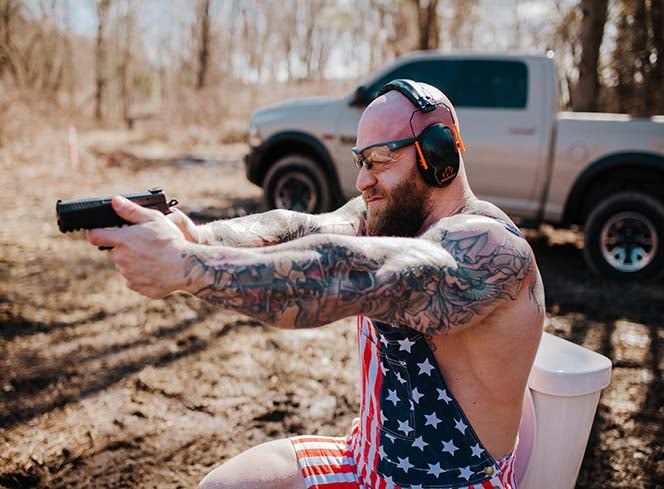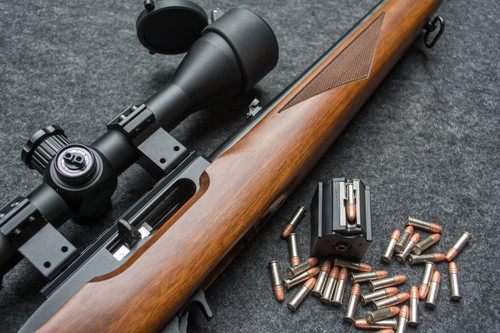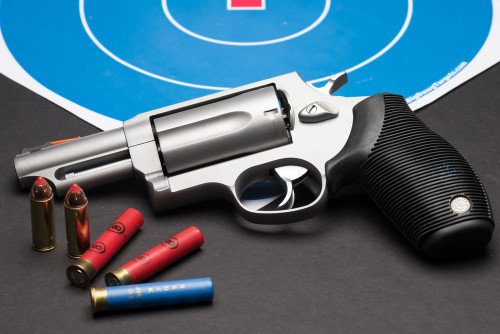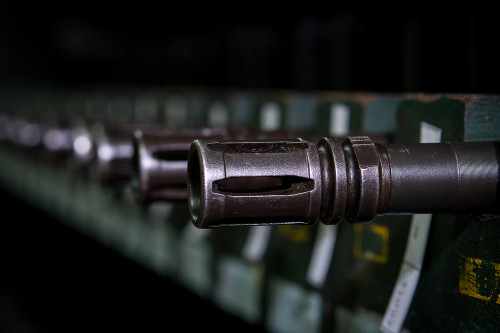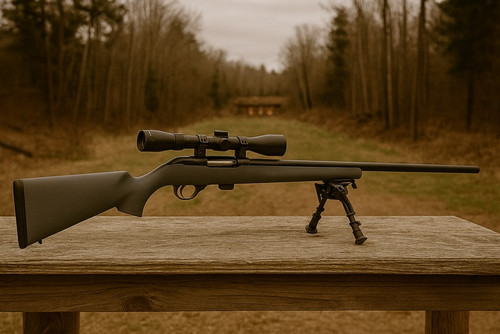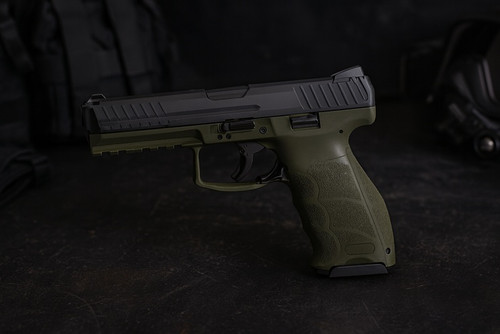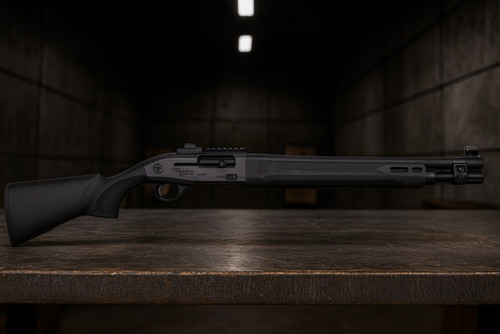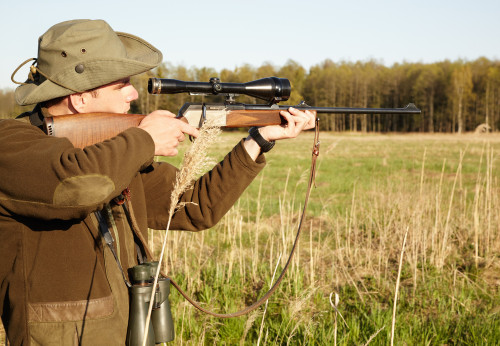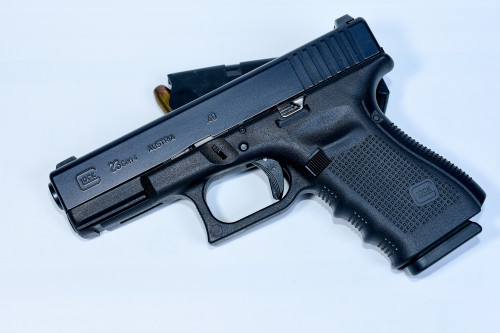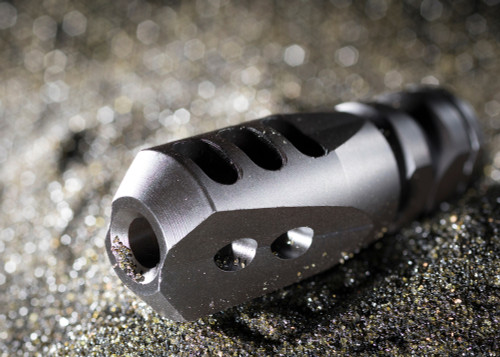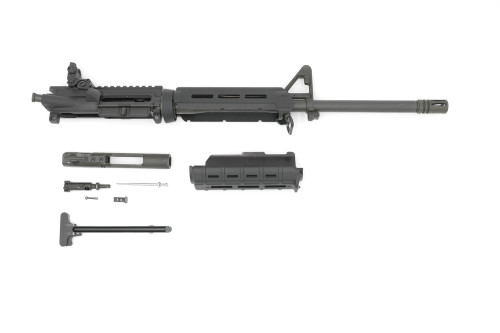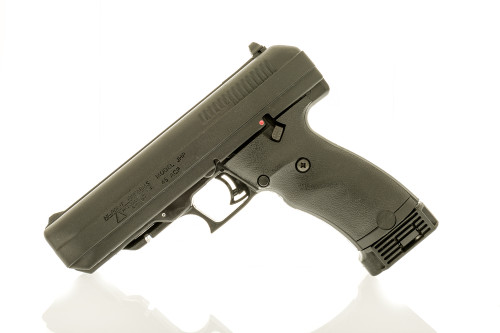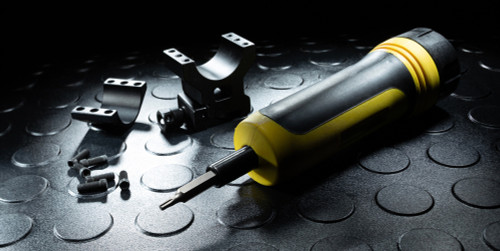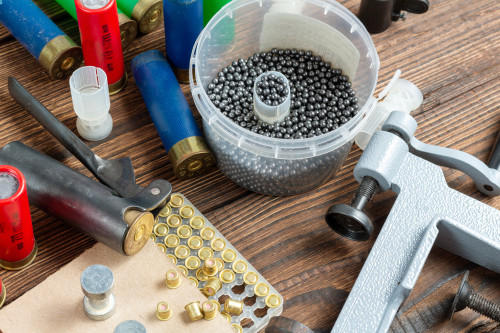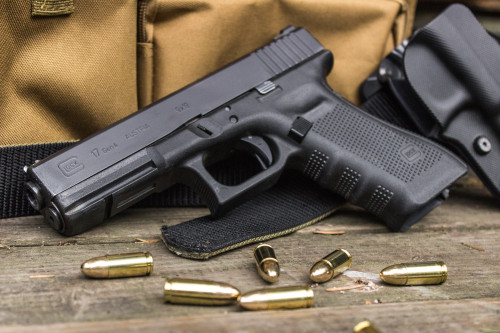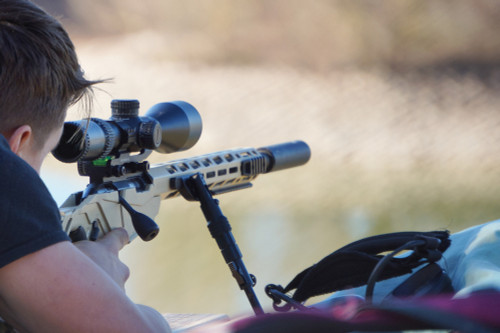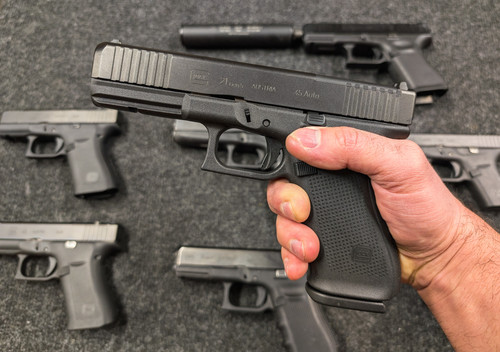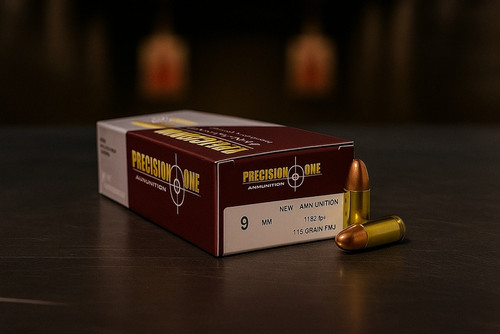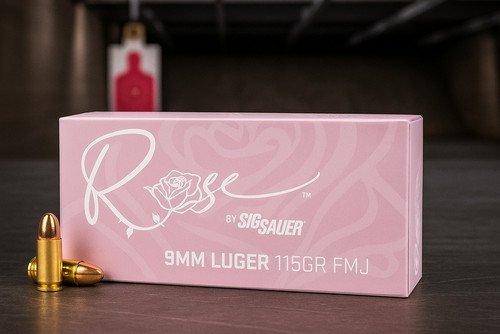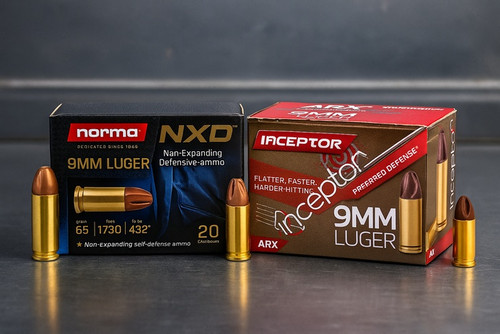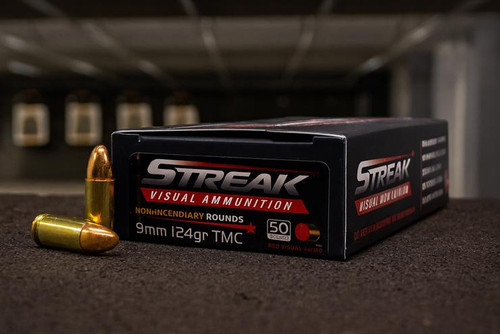Quick Answer
The Glock 23 is a compact .40 S&W that balances capacity, concealment, and performance. Recoil feels sharper than 9mm. But you can swap calibers to 9mm or .357 SIG for added flexibility. Gen 5 models improve ergonomics and controls. If you value proven duty heritage and want a convertible platform, the G23 stays a solid defensive choice despite the 9mm trend.
Key Takeaways
- Compact duty-heritage .40 with long track record
- Converts to 9mm/.357 SIG via barrel/mag swaps
- Gen 5 fixes ambi controls and grip feel
- Sharper recoil than 9mm; training mitigates it
- Wide aftermarket: sights, lights, triggers, holsters
- Still viable for defense if you prefer .40
The Glock 23 is a compact .40 S&W that blends capacity, concealment, and performance. Recoil hits harder than 9mm. Still, caliber-swap options to 9mm or .357 SIG bring useful flexibility. Gen 5 models upgrade the grip and controls. If you want proven duty roots and a platform that can convert, the G23 remains a strong defensive pick even as 9mm gains ground.
Pros & Cons
Pros
- Proven track record; broad parts ecosystem
- Caliber conversion: 9mm/.357 SIG barrel + mags
- Compact size balances concealment and shootability
- .40 S&W commonly available in many shops
Cons
- Heavier recoil impulse than 9mm
- Lower capacity than comparable 9mm frames
- .40 practice ammo typically costs more
The bottom line: the Glock 23’s compact frame lands between full-size and sub-compact pistols. Its stock 13-round capacity covers most defensive needs. If you want a straightforward .40 caliber handgun that stays accurate and consistent, the G23 deserves a close look.
Specs & Features
Core Specs:
- Caliber: .40 S&W
- Barrel Length: 4.02 inches
- Overall Length: 7.28–7.36 inches (model/gen variance)
- Height: 5.04 inches
- Width: Gen4 1.26 inches; Gen5 1.34 inches
- Unloaded weight: Gen4 23.8 oz (empty w/mag); Gen5 26–27 oz (empty w/mag)
- Loaded weight: 31.22 oz
- Capacity: 13+1 standard. Accepts OEM 15-rd G22 mags and OEM 22-rd extended mags; higher or intermediate counts are aftermarket.
Features:
- Convertible calibers with barrel swap
- Access to extensive Glock aftermarket
- nDLC finish on Gen 5 models
- Ambidextrous slide stop (Gen 5 only)
- Reversible magazine release (Gen4 and Gen5)
- No finger grooves on Gen 5 models
According to Glock’s official product specifications, the G23 keeps the brand’s focus on balance and function in a compact package.
Background: How We Got Here
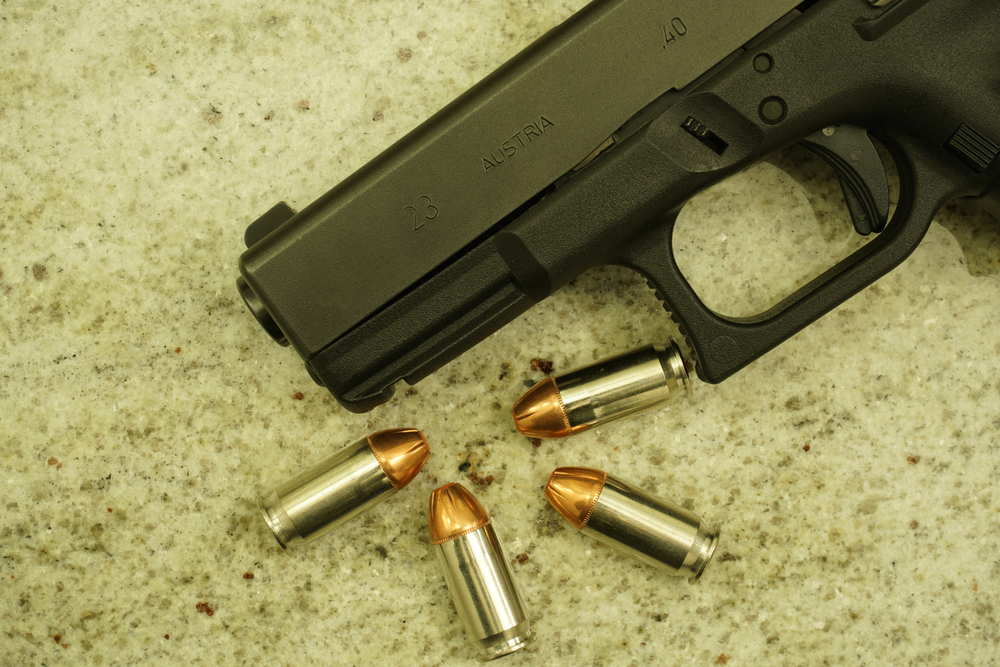
The .40 S&W arrived in 1990 after the FBI asked for a lower-powered 10mm round. They liked the .400 bullet diameter but not the sharp recoil. Glock moved fast and launched the G22 and G23 that same year.
For more than three decades, law enforcement agencies across the United States carried these pistols on duty. The fourth generation of Glock pistols, including updated Glock 23 models, came out in July 2010 with fresh features on a proven platform.
But times change. In recent years, many departments moved back to 9mm. The reasons include better modern ammo, higher capacity, and easier training. Even so, .40 S&W still sells well and still rides in many holsters. People who want a larger bullet diameter and a long record of field use keep choosing it.
Who Is It For?
The G23 appeals to several distinct groups of gun owners
First, concealed carriers who want the stopping power of .40 S&W in a package that's easier to hide than a full-size pistol. The G23 has earned its reputation as "the G19 of the .40 caliber world" for good reason.
Second, those who value flexibility. With a barrel swap and different magazines, your G23 transforms into a 9mm or .357 SIG pistol. This multi-caliber capability provides options during ammo shortages or for training purposes.
Third, home defenders are looking for a compact pistol that still offers good capacity and the ability to mount lights and optics. The single accessory rail accommodates most weapon lights, and newer models offer optics-ready slides.
Finally, shooters already familiar with Glock's manual of arms appreciate the consistency across models. If you train on one Glock, you can pick up any other and feel right at home.
Fit & Feel
Glocks have a distinct feel. The G23 shares that shape with its siblings. If you grew up on polymer, double-stack pistols, it will feel normal. If you started on 1911s or revolvers, you may need a little time to settle in.
Gen 3 models add finger grooves. Some hands like them. Others do not. Gen 5 models remove the grooves and add interchangeable backstraps for a better personal fit. Left-handed users benefit from the Gen 5 ambidextrous slide stop and reversible magazine release. Earlier generations do not offer both of those aids.
One small gripe with older models: unless you pick a Gen 5, the mag release does not reverse. That can be a deal-breaker for left-handed users. The left-side-only slide release adds to the hassle. Glock fixed both points in Gen 5.
The trigger breaks consistently with that familiar Glock feel. Not match-grade out of the box, but predictable and serviceable. Many users leave it stock for defensive use, though numerous aftermarket options exist for those seeking improvements.
For daily carry, the G23’s compact size hides easier than a full-size G22. Yet the grip still gives enough purchase for solid control.
G23 Gen 3 vs Gen 5
| Feature | Gen 3 | Gen 5 |
|---|---|---|
| Slide Stop | Left-side only | Ambidextrous |
| Mag Release | Fixed | Reversible |
| Finger Grooves | Present | Deleted |
| Finish | Tenifer / nitride-style | DLC |
| MOS Option | No factory MOS; aftermarket milling / plates common | Factory MOS variants (common) |
How Does It Shoot?
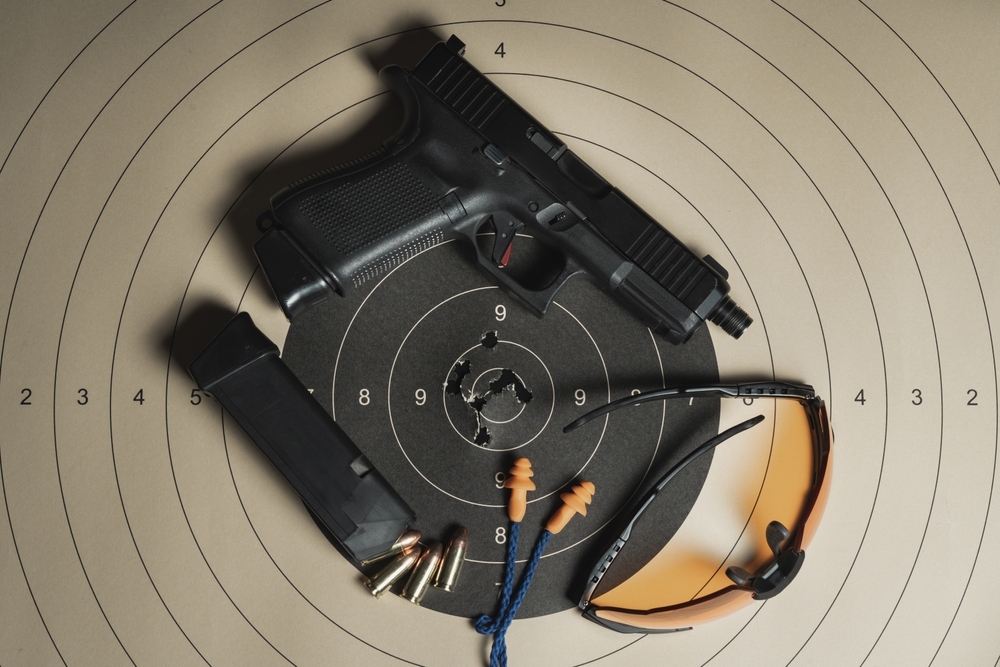
Typical service-pistol recoil energy figures: 9mm ≈ 4–5 ft-lb, .40 ≈ 6–7 ft-lb (load & gun dependent)—roughly ~40% increase for common duty loads. That adds a sharper, snappier impulse most range users notice right away.
Is that extra recoil a deal-breaker? Not really. With good technique and steady practice, most people handle it well. The compact G23 will feel snappier than a full-size G22. But the trade for easier concealment makes sense for many carriers.
At defensive distances (7-25 yards), the G23 delivers excellent accuracy. Users consistently report tight groups with their preferred ammunition. Gen3/4: polygonal rifling; Gen5: Glock Marksman Barrel—revised polygonal profile and crown for accuracy.
The gun runs both practice FMJ loads and defensive hollow points with confidence. With 165–180 grain bullets, accuracy stays steady across brands and styles. Many users say their G23 shoots better than they do. That is strong praise for any pistol.
For those who have installed conversion barrels, performance in 9mm or .357 SIG typically matches factory guns in those calibers. This versatility adds significant value for training or during ammunition shortages.
What Sets It Apart
The G23’s standout quality is how many roles it can fill. This original G23 now sports a conversion 9mm barrel and 9mm magazine. 9mm conversions can be highly reliable with good barrels and mags; for best results, consider 9mm-specific ejector/extractor and proof thoroughly before carry. . It can feel like getting two guns from one frame.
The huge aftermarket for Glocks brings wide customization. You can change sights, triggers, barrels, and holsters with ease. If you want an option, chances are someone makes it for the G23.
Parts that match other Glock models keep upkeep simple. Shared accessories across models save time and money. Magazines from the larger G22 work perfectly in the G23. It offers increased capacity when concealment isn't an issue.
For those with law enforcement or military backgrounds, the G23's duty lineage offers familiar handling and proven performance under stress. This heritage matters when selecting a defensive tool.
Caliber Conversions & Safety Notes
Converting a G23 to 9mm needs two parts: a conversion barrel and 9mm magazines. Many users report excellent results with quality conversion barrels. Some also suggest upgrading the extractor and recoil spring for best performance.
A good reason to go with a G23 or 22 is the conversion capability, effectively turning one gun into two distinct caliber pistols.
For .357 SIG conversion, only a barrel swap is needed since .40 S&W magazines work fine with .357 SIG rounds. This gives you three potential calibers from one frame!
Important safety notes:
- Always follow manufacturer guidelines for conversions
- Test thoroughly before carrying with any conversion
- Use quality components from reputable manufacturers
- Verify function with your specific defensive ammunition
Upgrades That Matter
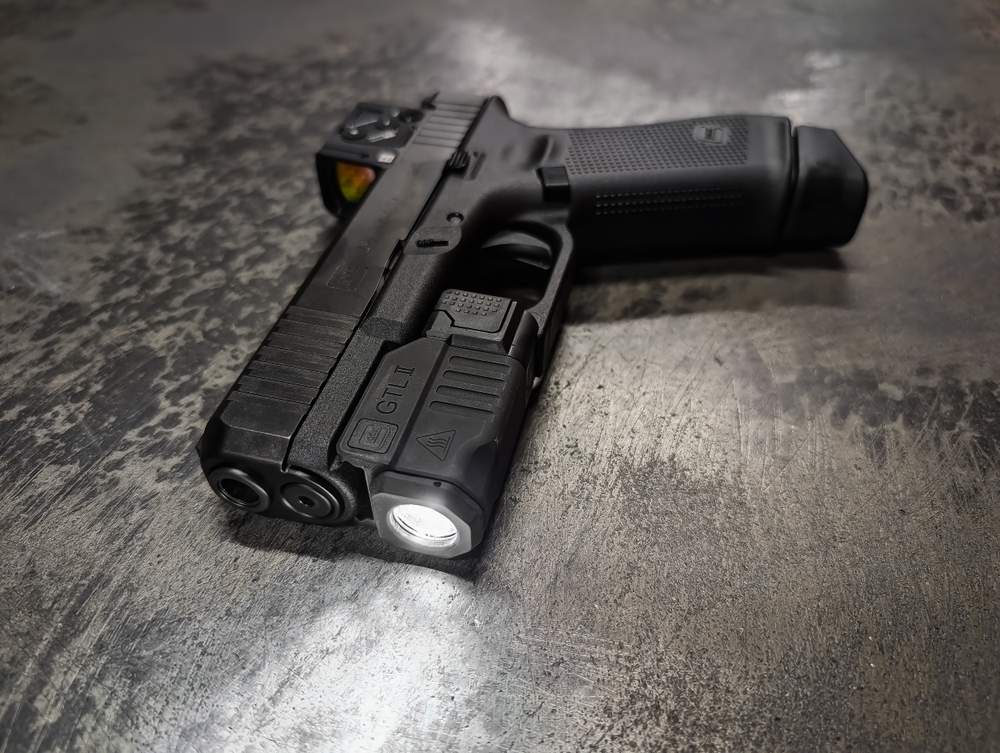
Sights: The factory polymer sights are widely considered the weakest link in the Glock package. Steel night sights like TruGlo TFO dramatically improve sight picture and durability.
Weapon Lights: The G23's single accessory rail accommodates most major weapon lights. The Streamlight TLR-1 with its 1,000 lumens output is popular and "ought to get anybody's attention" in a defensive situation.
Triggers: Numerous aftermarket options exist, but for defensive use, focus on smoothness rather than ultra-light pull weights. Maintain safe pull weights (4-5.5 lbs) for carry.
Holsters: Quality Kydex or hybrid holsters with positive retention are essential. Inside-the-waistband models provide secure, comfortable carry.
Magazines: Stick with OEM Glock magazines for defensive use. Extended capacity options provide more rounds for range sessions or home defense.
Ammo & Testing
For defensive use in .40 S&W, bonded hollow points still lead the pack. Common bullet weights run from 155 to 180 grains. The 165-grain loads give a good blend of speed and recoil control.
Training ammo usually uses 165 to 180 grain FMJ projectiles. Heavier 180-grain rounds can feel a bit softer than lighter bullets pushed faster.
A solid test plan helps you trust the gun and the load. Run at least 200 to 300 rounds through the pistol. Include at least 50 rounds of your chosen defensive ammo. This checks function and helps you learn the recoil feel.
G23 vs G19 (9mm) Quick Comparison
The G19 (9mm) and G23 (.40 S&W) share the same external size. Capacity and recoil set them apart. The G19 usually carries 15+1 rounds. That is two more than the G23’s 13+1.
The 9mm kicks less for most people. Follow-up shots tend to come faster. That is a key reason many law enforcement groups moved back to 9mm after years with .40 S&W.
Ammo cost often favors 9mm in most places. Supply swings can flip that, so .40 S&W sometimes shows up more in shortage cycles. Some people still pick .40 for its larger bullet diameter and a perceived edge in certain defense roles.
The beauty of the G23? With a conversion barrel and magazines, you can essentially own both a G23 and G19 in one package.
By the Numbers
Reliability: 5/5
The G23 runs consistently across ammo types and varied conditions. After thousands of rounds, many users report zero malfunctions. That is exactly what you want in a defensive pistol.
Ergonomics: 3.5/5
Gen 3 models keep the blocky grip and fixed controls. Gen 5 models step up with no finger grooves, backstrap choices, and ambidextrous controls.
Accuracy: 5/5
At defensive distances, the G23 delivers excellent practical accuracy with quality ammunition. Most users report consistent groups that exceed their own shooting capabilities.
Customization: 5/5
The enormous Glock aftermarket provides endless options for personalization and improvement. Few pistols offer this level of aftermarket support.
Value: 4/5
It can cost a bit more than some rivals. Even so, the G23 brings strong resale value, wide parts availability, and multi-caliber capability that supports the price.
Overall: 4.5/5
Buying Guide & Pricing Snapshot
New G23 models often land around $500 to $600. Gen 5 MOS versions sit higher at about $650 to $750. Used Gen 3 police trade-ins can be great buys at $350 to $450. They may show holster wear, but they usually run well.
When budgeting, factor in:
- Quality holster: $50-100
- Upgraded sights: $75-150
- Weapon light (recommended): $120-300
- Spare magazines: $25-35 each
- Range ammunition for training: $0.30-0.45/round
For strong value, look at a used Gen 3 plus a 9mm conversion barrel. You get wide flexibility at a fair total cost.
Safety, Maintenance & Longevity
The .40 S&W runs at higher pressures than 9mm. That can speed up wear in theory. But Glocks are built with margin and handle this for tens of thousands of rounds.
Long-term G23 owners report long life and steady performance. Most of them commented that it shoots like it did when it was new. Even with thousands of rounds fired using the gun, it is dependable, controllable and always accurate.
Recommended maintenance includes:
- Regular cleaning after range sessions
- Visual inspection of critical components
- Recoil spring replacement every 3,000-5,000 rounds
- Magazine spring maintenance and inspection
- Professional inspection by qualified armorer every 10,000 rounds
Final Verdict
The Glock 23 continues to be a viable defensive pistol in today's market, especially for those who:
- Prefer the terminal ballistics of .40 S&W
- Value the caliber conversion flexibility
- Have previous training on the platform
- Find .40 S&W readily available in their region
For new shooters or those focused primarily on capacity and follow-up speed, the G19 in 9mm might be the better choice. However, don't let anyone tell you the .40 S&W is "dead" - it remains effective and common.
The G23 stands out for adaptability, a proven record, and a huge support ecosystem. With good training to manage recoil and quality defensive ammo, it still fills its role well.
The bottom line: The GLOCK 23 like all GLOCKS is dependable, accurate, and fun to shoot. It gives a full, but slightly shorter grip, and 4" barrel. Those slightly smaller dimensions make it easier to conceal than the full size G22.
When deciding whether the Glock 23 is the right fit, it helps to compare ergonomics, magazine capacity, and real-world reliability with other .40 pistols. See our Best .40 S&W Pistols for Reliability and Performance for side-by-side notes and alternate models to consider.

FIOCCHI 40S&W 180GR FMJ 50RD BOX
$22.72
at Pro Armory
Prices accurate at time of writing
Frequently Asked Questions (FAQs)
Is .40 S&W obsolete for self-defense today?
No. Though 9mm has gained popularity with modern defensive ammunition, the .40 S&W remains effective and widely available. Many experienced shooters still prefer its terminal ballistics.
Can I safely convert my G23 to 9mm?
Yes, with a quality conversion barrel and 9mm magazines. Test thoroughly before carrying. Many users report excellent results with this common conversion.
What Gen 5 improvements matter most for carry?
The improved ergonomics, ambidextrous controls, and better finish are most relevant for everyday carry. Left-handed shooters particularly benefit from these changes.
Best defensive ammo weights for G23?
165-grain loads typically offer the best balance of performance and control, though 155gr and 180gr options also perform well. Test several to find what works best in your gun.
Does .40 "beat up" guns faster than 9mm?
Theoretically yes, but modern pistols like Glocks are designed to handle the pressure. Regular maintenance mitigates any concerns, and many G23s have fired tens of thousands of rounds without issues.
Are Gen 3 police trade-ins worth it?
Often yes - they typically show cosmetic wear but remain functionally excellent and offer great value. Many experienced shooters specifically seek out these pre-owned bargains.
What holster types work best with lights?
Purpose-designed light-compatible Kydex holsters from quality manufacturers offer the best fit and retention. Avoid generic "one size fits most" options for defensive carry.
Does the G23 accept G22 magazines?
Yes, G22 magazines work perfectly in the G23 and provide additional capacity when concealment isn't the primary concern.
Is MOS worth it if I might add a red dot?
Yes, the factory MOS system offers a clean, warranty-maintaining solution for mounting optics. It typically costs less than aftermarket milling and preserves the factory finish.
About the Author
This article was written by the ProArmory writing team using current research. Sources include the Journal of Military Science, Firearms News, and the National Shooting Sports Foundation. We also used information from official defense publications and respected firearm authorities such as the ATF, NRA, and manufacturer manuals.
Disclaimer: This information is for education only. It is not legal advice. Laws on firearm ownership and carry vary by state and locality. Always check your local laws. Get professional training before buying or carrying any firearm.




 Pro Armory Editorial Team
Pro Armory Editorial Team